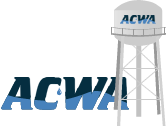
Using Water Efficiently: Ideas for Residences
Efficient water use can have major environmental, public health, and economic benefits by helping to improve water quality, maintain aquatic ecosystems, and protect drinking water resources. By using water more efficiently and by purchasing more water efficient products, we can also help mitigate the effects of drought. Efficiency measures can also save the homeowner money on their water and energy bills. This list of measures is not meant to be comprehensive, but rather a starting point.
Bathrooms are where over half of all water use inside a house takes place:
Kitchen and Laundry practices that save a lot of water:
Bathrooms are where over half of all water use inside a house takes place:
- Do not let the water run while shaving or brushing teeth.
- Take short showers instead of tub baths. Turn off the water while soaping or shampooing.
- If you must use a tub, close the drain before turning on the water and fill the tub only half full. Bathe small children together.
- Never use your toilet as a waste basket.
Kitchen and Laundry practices that save a lot of water:
- Keep drinking water in the refrigerator instead of letting the faucet run until the water is cool.
- Wash fruits and vegetables in a basin. Use a vegetable brush.
- Do not use water to defrost frozen foods; thaw in the refrigerator overnight.
- Scrape, rather than rinse, dishes before loading into the dishwasher; wash only full loads.
- Add food wastes to your compost pile instead of using the garbage disposal.
- Wash only full loads of laundry or use the appropriate water level or load size selection on the washing machine.
- Install low-flow faucet aerators and showerheads.
- Consider purchasing a high efficiency washing machine which can save over 50% in laundry water and energy use.
- Repair all leaks. A leaky toilet can waste 200 gallons per day. To detect leaks in the toilet, add food coloring to the tank water. If the colored water appears in the bowl, the toilet is leaking.
- Detect and repair all leaks in irrigation system.
- Use properly treated wastewater for irrigation where available.
- Water the lawn or garden during the coolest part of the day (early morning is best). Do not water on windy days.
- Water trees and shrubs, which have deep root systems, longer and less frequently than shallow-rooted plants that require smaller amounts of water more often. Check with the local extension service for advice on watering needs in your area.
- Set sprinklers to water the lawn or garden only -- not the street or sidewalk.
- Use soaker hoses or trickle irrigation systems for trees and shrubs.
- Install moisture sensors on sprinkler systems.
- Use mulch around shrubs and garden plants to reduce evaporation from the soil surface and cut down on weed growth.
- Remove thatch and aerate turf to encourage movement of water to the root zone.
- Raise your lawn mower cutting height -- longer grass blades help shade each other, reduce evaporation, and inhibit weed growth.
- Minimize or eliminate fertilizing, which promotes new growth needing additional watering.
- When outdoor use of city or well water is restricted during a drought, use the water from the air conditioning condenser, dehumidifier, bath, or sink on plants or the garden. Don't use water that contains bleach, automatic-dishwashing detergent or fabric softener.
- Sweep driveways, sidewalks and steps rather than hosing off.
- Wash the car with water from a bucket, or consider using a commercial car wash that recycles water.
- When using a hose, control the flow with an automatic shut-off nozzle.
- Avoid purchasing recreational water toys which require a constant stream of water.
- Consider purchasing a new water-saving swimming pool filter.
- Use a pool cover to reduce evaporation when pool is not being used.
- Do not install or use ornamental water features unless they recycle the water. Use signs to show the public that water is recycled. Do not operate during a drought.
High-efficiency plumbing fixtures and appliances save about 30% of indoor water use and yield substantial savings on water, sewer, and energy bills:
Depending on the climate, up to 75 percent of the total water use during the growing season is for outdoor purposes (During drought conditions outdoor watering restrictions may be imposed, so some of the following tips will not apply.):
Other Outdoor Uses:

















